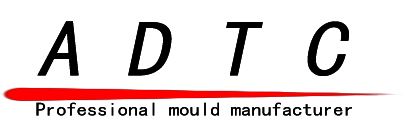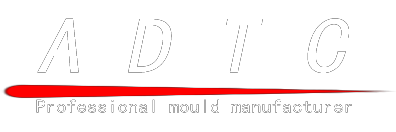Although the structure of the mold may vary depending on the type and performance of the plastic, the shape and structure of the plastic product, and the type of the injection machine, the basic structure is uniform. The mold is mainly composed of a gating system, a temperature control system, a molded part and a structural part. The gating system and the molded part are in direct contact with the plastic and vary with the plastic and the product. It is the most complicated and most varied part of the mold, and requires the highest degree of smoothness and precision.
The gating system refers to the part of the flow path before the plastic enters the cavity from the nozzle, including the main channel, the cold material hole, the shunt channel and the gate. Molded parts refer to various parts that make up the shape of the product, including moving molds, fixed molds and cavities, cores, forming rods, and exhaust ports.
First, the pouring system
The gating system, also known as the runner system, is a set of feed channels that direct the plastic melt from the injector nozzle to the cavity, typically consisting of a main flow path, a split runner, a gate, and a cold feed pocket. It is directly related to the molding quality and production efficiency of plastic products.
Mainstream roadIt is a passage in the mold that connects the nozzle of the injection machine to the splitter or cavity. The top of the main flow path is concave to engage the nozzle. The inlet diameter of the main flow channel should be slightly larger than the nozzle diameter (O.8mm) to avoid flashing and prevent the two from being blocked due to inaccurate connection. The diameter of the inlet depends on the size of the product, which is generally 4-8mm. The diameter of the main flow path should be enlarged inward by an angle of 3° to 5° in order to demold the flow path.
2. Cold pocket
It is a cavity at the end of the main flow path to capture the cold material generated between the two injections at the end of the nozzle to prevent clogging of the runner or gate. If the cold material is mixed into the cavity, internal stress is easily generated in the manufactured product. The cold pocket has a diameter of about 8-10 mm and a depth of 6 mm.
In order to facilitate demolding, the bottom is often carried by the stripper. The top of the stripper rod should be designed as a zigzag hook or a recessed groove so that the main channel can be smoothly pulled out during demolding.
3. Shunt runner
It is the channel connecting the main channel and each cavity in the multi-slot die. In order for the melt to fill the cavities at a constant velocity, the arrangement of the runners on the mold should be symmetric and equidistant.
The shape and size of the cross-section of the runner have an effect on the flow of the plastic melt, the release of the product, and the ease of mold manufacture. If the flow is of equal amount, the flow path resistance with a circular cross section is the smallest.
However, due to the small specific surface of the cylindrical flow passage, it is unfavorable for the cooling of the shunt passage, and the shunt must be opened on the two mold halves, which is laborious and easy to align. Therefore, a trapezoidal or semi-circular cross-section runner is often used and is placed on one half of the mold with the stripper.
The runner surface must be polished to reduce flow resistance to provide faster mold filling speed. The size of the runner is determined by the variety of plastics, the size and thickness of the product. For most thermoplastics, the cross-sectional section width is no more than 8m, and the extra large can reach 10-12m, and the extra small is 2-3m. Under the premise of meeting the needs, the cross-sectional area should be minimized to avoid increasing the shunting and prolonging the cooling time.
4. Gate
It is the channel that connects the main channel (or shunt) to the cavity. The cross-sectional area of the channel can be equal to the main channel (or shunt), but it is usually reduced. So it is the smallest part of the cross-sectional area of the entire runner system. The shape and size of the gate have a great influence on the quality of the product.
The role of the gate is:
Control the flow rate. In the injection, the melt can be prevented from flowing back due to the early condensation of the molten material stored in this part.
The passing melt is subjected to strong shearing to raise the temperature, thereby lowering the apparent viscosity to improve the fluidity and facilitating the separation of the product from the runner system. The design of the shape, size and position of the gate depends on the nature of the plastic, the size and structure of the product. Generally, the cross-sectional shape of the gate is rectangular or circular, and the cross-sectional area should be small and the length should be short, which is not only based on the above effects, but also because It is easier to make a small gate larger, and it is difficult to reduce a large gate. The location of the gate should generally be chosen where the product is thickest and does not affect the appearance. The gate size should be designed to take into account the nature of the plastic melt. The cavity is the space in which the plastic product is molded in the mold.
Second, the temperature control system
In order to meet the mold temperature requirements of the injection process, a temperature adjustment system is required to adjust the temperature of the mold. For injection molds for thermoplastics, the cooling system is primarily designed to cool the mold.
The common method of mold cooling is to open a cooling water channel in the mold, and use the circulating cooling water to take away the heat of the mold; in addition to using the cooling water channel hot water or steam, the heating of the mold can also install electricity inside and around the mold. Heating element.
Third, molded parts
The molded part consists of a core and a die. The core forms the inner surface of the article and the die forms the outer surface shape of the article. After clamping, the core and cavity form the cavity of the mold. According to the process and manufacturing requirements, sometimes the core and the die are made up of several pieces, sometimes made into a whole, and only the inserts are used in the parts that are easily damaged and difficult to process.
Exhaust port It is a slot-shaped air outlet opened in the mold to discharge the original and the gas brought in by the melt. When the molten material is injected into the cavity, the air originally stored in the cavity and the gas brought in by the melt must be discharged to the outside of the die through the exhaust port at the end of the flow, otherwise the product will have pores and poor connection. The filling is not full, and even the accumulated air burns the product due to the high temperature generated by compression.
In general, the vent hole can be located at the end of the flow of the melt in the cavity or on the parting surface of the mold.
The latter is a shallow groove having a depth of 0.03-0.2 mm and a width of 1.5-6 mm on one side of the die. During the injection, the vent hole does not have a lot of melt oozing out, because the melt will cool and solidify there to block the passage. Do not point the opening of the exhaust port to the operator to prevent the fuse from accidentally squirting and injuring people. In addition, the matching gap between the ejector rod and the ejector hole, the matching gap between the top block and the stripping plate and the core may be utilized to exhaust.
Fourth, structural parts
It refers to the various parts that make up the mold structure, including: guiding, demoulding, core pulling and various parts of the parting. Such as front and rear splint, front and rear buckle template, bearing plate, pressure column, guide column, stripping plate, stripping rod and return rod.
Guide part
In order to ensure accurate alignment of the moving and fixed molds during mold clamping, guide members must be provided in the mold. In the injection mold, four sets of guide columns and guide sleeves are usually used to form the guide, and sometimes the inner and outer tapered surfaces are respectively arranged on the movable mold and the fixed mold to assist the positioning.
2. Launching agency
In the mold opening process, an ejection mechanism is required to push or pull the plastic product and its aggregate in the flow path. A fixing plate and a push plate are introduced to hold the push rod. A reset lever is generally fixed in the push rod, and the reset lever resets the push plate when the mold is fixed and fixed.
3. Side core pulling mechanism
Some plastic products with undercuts or side holes must be laterally typed before being pushed out, and the side cores can be smoothly released after being pulled out. In this case, a side core pulling mechanism is required in the mold.
4. Standard formwork
In order to reduce the heavy mold design and manufacturing workload, most of the injection molds use standard mold bases.


